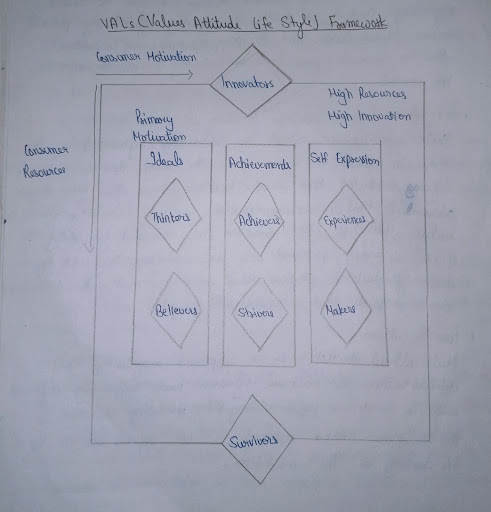The step toward developing segmentation bases in marketing is to locate the bases for segmenting a market. The four most important classes of customer traits offer the maximum famous bases for market segmentation.
Segmentation Bases in Marketing
- Geographic Segmentation
- Demographic Segmentation
- Psychographic Segmentation
- Behavioural Segmentation
In this section, we will discuss the bases for market segmentation in detail.
1. Geographic Segmentation
It is the most simple, convenient, popular & usual bases for market segmentation. In the Geographic segmentation bases in marketing, the market is divided by location. It calls for dividing the different geographical units, such as markets, into the nation, states, regions, countries, cities, etc. The theory behind this bases for market segmentation is that people who live in the same area share some similar needs and wants.
Therefore, these needs & wants differ from those of people living in other areas. Marketers can easily reach geographic segments through the local media, including newspapers, Tv, radio, and advertisement through regional editions of magazines.
2. Demographic Segmentation
In demographic segmentation bases in marketing, we divide the market by age, family size, life cycle, gender, income, religion, race, generation, nationality, and social class. It is one of the bases for market segmentation. One reason demographic variables are so popular with marketers is that they are easy to measure.
Here’s how entrepreneurs have used sure demographic variables to section markets. These variables are further known as bases for market segmentation.
i) Age & Life-Cycle Stage
Consumers’ wants & abilities change with age. Toothpaste brands such as Crest and Colgate offer three main lines of product to target kids, adults & older consumers. People in the same part of the life cycle may still vary in their life stages. The life stage defines concern, such as going through a divorce, going into a second marriage, deciding to buy a new home, etc. These life stages present opportunities for marketers who can help people cope with these significant concerns.
ii) Gender
Men & Women have different attitudes & behave differently, based partly on genetic makeup and partly on socialisation. Women tend to be more communal-minded and men more self-expressive & goal-directed. Women tend to take in more data in their immediate environment, and men focus on the part of the environment that helps them achieve a goal. Men often like to read product information; women may relate to a product more personally.
iii) Income
Income segmentation bases in marketing are used by many manufacturers supplying such products & services as automobiles, clothing, cosmetics, financial services & travel. It is so because a person’s income greatly affects the choice of a product and the bases for market segmentation. Manufacturers must pay continuous and constant attention to the market’s income, savings, and interest rates.
iv) Generation
Each generation or cohort is profoundly in influence by the times. It grows up, the music, movies, politics & defining events of that period. Members share the same significant cultural, political & economic experiences & have similar outlooks and values.
Marketers often advertise to cohorts using icons and images prominent in their experiences and according to the bases for market segmentation. They also try to develop products & services that uniquely meet a generational target’s particular interest or needs. This type of segmentation bases in marketing is helpful in demographic segmentation.
v) Race & Culture
Multicultural marketing is an approach recognising that different ethnic and cultural segments have sufficiently different needs and wants. It requires targeted marketing activities and that a mass market approach is not refined enough for the diversity of the marketplace.
3. Psychographic Segmentation
Psychographics is the science of using psychology and demographics to understand consumers better. In Psychographic Segmentation bases in marketing, buyers are into groups based on psychological/ personality traits, lifestyle, or values. People within the same demographic group can exhibit very profiles.

The significant dimensions of the VALS segmentation framework are customer motivation (the horizontal size) and customer sources (the vertical dimension). Consumers get inspiration from one of three primary motivations bases for market segmentation: Ideals, Achievement, and self-expression.
Those primarily motivated by ideals are in acknowledgment by knowledge & principles. Those inspired by achievement look for products and services that demonstrate success to their peers. Consumers inspired to self-expression desire social or physical activity, variety, and risk. Personality traits such as energy, self-confidence, intellectualism, novelty seeking, innovation, and vanity-in conjunction with key demographics- determine an Individual’s resources. Different levels of resources enhance or constrain a person’s expression of their primary motivation.
The Four Groups with Higher Resources of Segmentation Bases in Marketing are:
i) Innovators
Successful, sophisticated, active, “take charge” human beings with excessive self-esteem. Purchases often deflect cultivated tables for relatively upscale, niche-oriented products and services.
ii) Thinkers
Mature, Satisfied & reflective people motivated by ideals. Those people who value order, knowledge, and responsibility. They are trying to find durability, capability, and price in merchandise.
iii) Achievers
Successful, goal-oriented people. Those who focus on career & family. They favour top rate merchandise that display achievement to their peers.
iv) Experiences
Young, enthusiastic, passionate people. Those who seek variety and excitement. They spend a comparatively high income on fashion, entertainment, and socialising.
The Four Groups with Lower Resources of Segmentation Bases in Marketing are:
i) Believers
People are conservative and traditional. Also, people with concrete beliefs are believers. They prefer familiar products and are loyal to established brands.
ii) Strivers
Trendy and fun-loving folks who are useful resource constrained. They favour stylish products that emulate the purchases of those with more incredible material wealth.
iii) Makers
Practical, down-to-earth, self-sufficient people. People who like to work with their hands. They seek products with a practical or functional purpose.
iv) Survivors
Elderly, passive people concerned about change & loyal to their favourite bounds.
4. Behavioural Segmentation
In Behavioural bases for market segmentation, entrepreneurs divide customers into organisations primarily based totally on their know-how of, mindset toward the use of, or reaction to a product.
User & Usage Real User & Usage Related Variables in Market Segmentation
Many marketers believe variables related to various aspects of users of their usage- occasions, user status, usage rate, and buyer readiness stage. Also, loyalty statuses are good starting points for constructing market segments.
i) Occasions
We can distinguish buyers according to the events when they develop a need, purchase a product, or use it.
ii) User Status
Every product has non-users, ex-users, potential users, first-time users, & regular users. The key to attracting potential users, or even possibly non-users, is understanding why they are not using.
iii) Usage Rate
Marketers can segment markets into light, medium, and heavy product users.
iv) Buyer-Readiness Stage
Some people are unaware of the product, some are aware, some are informed, some are interested, some desire the product, and some intend to buy. To help characterise how many people are at different stages and how well they have converted people from one step to another. The marketers can employ a marketing funnel to break down the market into different buyer-readiness stages.
v) Loyalty Status
Marketers usually envision four groups of brand loyalty status:
a) Hard-core Loyals
Consumers who buy only one brand all the time.
b) Split Loyals
Consumers who are loyal to two or three brands.
c) Shifting Loyals
Consumers who shift loyalty from one brand to another.
d) Switchers
Consumers who show no loyalty to any brand.
vi) Attitude
Five consumer attitudes about products are enthusiastic, positive, indifferent, negative & hostile.
Conclusion
Market Segmentation is one of the most exciting and valuable tools in marketing management. The critical objective of segmentation bases in marketing is to know about the erratic buying behaviour of the consumer. So, marketers can reach that target consumers easily by framing various marketing programs based on such differences.


I am actually pleased too read this web site posts which contains plenty off useful data, thanks for providing these data. It is very helpful for my exam.
I like it whenever people come together and share opinions. Great website, continue the good work!
Fantastic website. Lots of useful information here. I?m sending it to several friends ans also sharing in delicious. And certainly, thanks for your effort!
I can’t express how much I appreciate the effort the author has put into creating this exceptional piece of content. The clarity of the writing, the depth of analysis, and the plethora of information offered are simply astonishing. His zeal for the subject is apparent, and it has certainly struck a chord with me. Thank you, author, for offering your wisdom and enhancing our lives with this extraordinary article!
Your content is like having a personal tutor – concise and effective.
More people have to read this and understand this valuable points.
The depth of information provided shows the expertise behind the content.